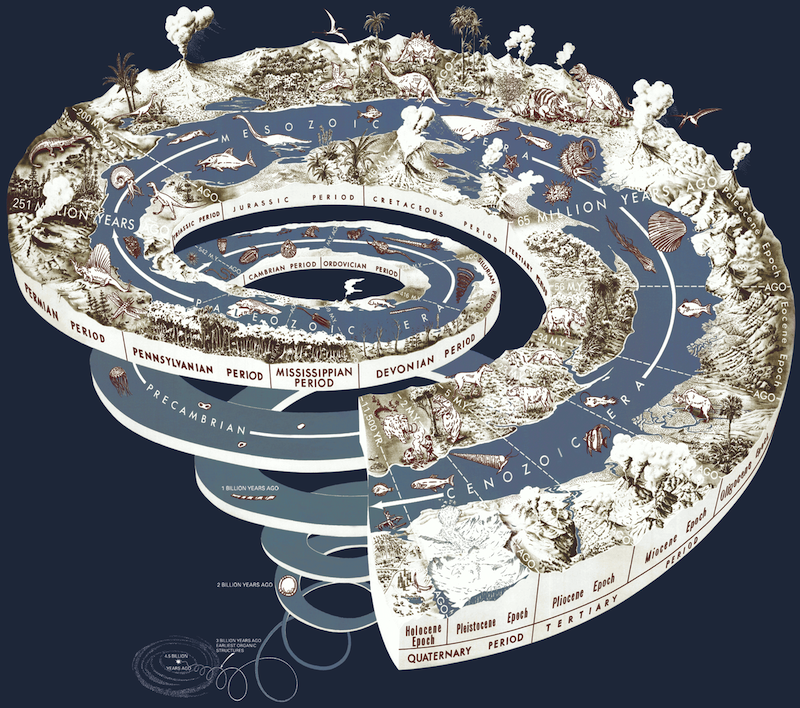“If you wish to make an apple pie from scratch, you must first invent the universe.” – Carl Sagan
Life on Earth is based on certain chemical ingredients: carbon, hydrogen, nitrogen, oxygen, phosphorus and sulfur (CHNOPS). But what about possible life elsewhere in the universe? Would it use the same ingredients, or are there many different recipes for life? It’s a difficult question to answer, since there are a finite number of known chemicals that life might be able to incorporate. With this in mind, researchers at the University of Wisconsin–Madison created a new “cookbook” with hundreds of recipes that potentially could come together to produce living things. The scientists announced their findings in the fall of 2023. The results show that there may be many recipes for life on distant planets and moons.
The researchers also published their new peer-reviewed paper in the Journal of the American Chemical Society.
The 2024 lunar calendars are here! Makes a great New Years gift. Check ’em out here.
Recipes for life may be more common than thought
Zhen Peng at the University of Wisconsin–Madison led the team that compiled 270 different sets of molecules for the new “life cookbook.” These combinations of molecules contain atoms from across the periodic table. The combinations are ones that could potentially give rise to a process called sustained autocatalysis. Autocatalysis is where chemical reactions produce molecules that encourage the same reaction to happen over and over again.
Those reactions are an important part of how life develops. The chemicals might come together fairly easily, but repetition is a key factor. It’s not enough for the right chemicals to mix together just once; it needs to be an ongoing process. As co-author and astrobiologist Betül Kaçar explained:
The origin of life really is a something-from-nothing process. But that something can’t happen just once. Life comes down to chemistry and conditions that can generate a self-reproducing pattern of reactions.
Even though we know that life’s building blocks are common in the universe, scientists have previously thought that autocatalytic reactions were rather rare in the universe. That means that the recipe that produced life on our own planet might not be too common. But the new study suggests otherwise. Kaçar said:
It was thought that these sorts of reactions are very rare. We are showing that it’s actually far from rare. You just need to look in the right place.
Searching for new recipes
To try to determine what other recipes for life might be possible, the researchers focused on searching for specific kinds of reactions called comproportionation reactions. In this case, you have two compounds that include the same element with different numbers of electrons, or reactive states. They combine to create a new compound in which the element is in the middle of the starting reactive states. The two compounds, or reactants, have different oxidation numbers.
As noted previously, however, that process needs to be repetitive, or autocatalytic. How does that happen? The reaction needs to produce the material that will allow the process to start over again. That new reaction then creates more new material and so on, becoming a self-sustaining cycle. With comproportionation reactions, multiple copies of some of the molecules involved are produced. This provides materials for the next steps in autocatalysis. In addition, each new turn of the cycle becomes faster than the previous one. This speeds up subsequent reactions. Co-author and research scientist Zach Adam said:
If those conditions are right, you can start with relatively few of those outputs. Every time you take a turn of the cycle you spit out at least one extra output which speeds up the reaction and makes it happen even faster.
The researchers draw a comparison to rabbits. Rabbits pair off together and produce litters of baby rabbits. The babies then grow up and pair off, making more rabbits. And so on.
Biosignatures and false positives
Learning more about potential other recipes for life can also help scientists better distinguish between genuine biosignatures and false positives. The paper states:
Such a systematic assessment may be necessary for pushing forward our understanding of abiogenesis, for disentangling false positive biosignatures from bona fide ones, and for circumscribing conditions suitable for the organization of complex chemical systems in general.

Testing recipes for life in earthly kitchens
Of course, we can’t ourselves go out to every place in the universe where such new recipes might be cooking. We also still don’t know exactly how life began on our planet. So scientists will need to test new recipes in kitchens on Earth, in labs. As Kaçar noted:
We will never definitively know what exactly happened on this planet to generate life. We don’t have a time machine. But, in a test tube, we can create multiple planetary conditions to understand how the dynamics to sustain life can evolve in the first place.
Carl Sagan said if you want to bake a pie from scratch, first you must create the universe. I think if we want to understand the universe, first we must bake a few pies.
Bottom line: Researchers in Wisconsin are searching for and testing new chemical recipes for the origin of life. Such life-producing recipes may be common in the universe.
Source: Assessment of Stoichiometric Autocatalysis across Element Groups
Via University of Wisconsin-Madison
Read more: Life beyond Earth: A universe of possibilities
Read more: How likely is an Earth-like origin of life elsewhere?